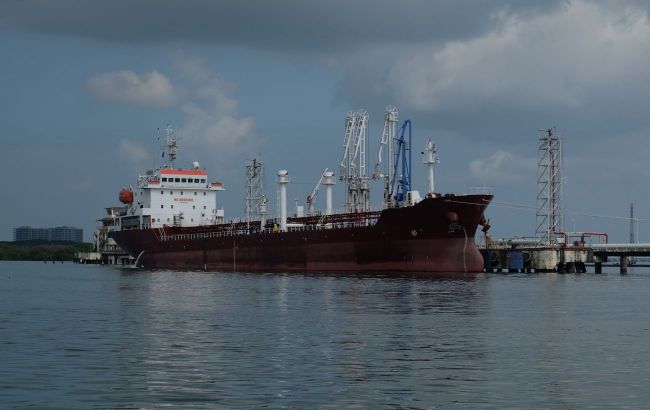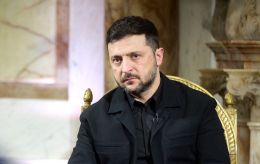How Russia created shadow fleet and why sanctions did not stop oil tankers
 Photo: Tankers from shadow fleet help Russia to receive billions from the oil trade (Getty Images)
Photo: Tankers from shadow fleet help Russia to receive billions from the oil trade (Getty Images)
Western sanctions have failed to halt maritime oil shipments from the Russian Federation. Moreover, recent data indicates that tankers from the "blacklist" are returning to active service.
Why this is happening, and how Russia created a shadow fleet - more in RBC-Ukraine’s material below.
Contents
Bypassing routes found for "blacklisted" tankers
The use of tankers sanctioned by the West for their involvement in the maritime transportation of Russian oil is increasing. Recently, almost a third of the vessels on the "blacklist" have returned to operation.
This includes at least 21 out of 72 tankers sanctioned by the US Department of the Treasury’s Office of Foreign Assets Control (OFAC), the UK Treasury, or the European Union. Since being subjected to sanctions in response to Russia’s full-scale invasion of Ukraine, these tankers have transported 24 shipments of Russian oil over the past year.
Bloomberg reports that a combination of growing buyer confidence and a lack of concern over the measures imposed by the UK has likely helped Moscow and its clients find workarounds.
The rate at which these tankers return to service is also increasing. At least seven of them picked up cargo in the first ten days of October, more than the six that resumed operations in August and September and just five before that.
Initially, the tankers on the "blacklist" were idle. By April 2024 (six months after the first vessels were named), none had transported a single shipment of Russian or other oil. However, now the use of these tankers has significantly increased.
The first sanctions were imposed by the US Department of the Treasury in October 2023. At that time, two tankers were sanctioned, Primorye and Yasa Golden Bosphorus, which transported oil sold above the price cap of $60 per barrel. The cap was introduced to limit Russia’s income from oil sales.
In the summer of 2024, 73 vessels were added to the UK and EU sanctions lists, nine of which faced sanctions from more than one authority. One tanker, Yasa Golden Bosphorus, was removed from the US list.
The UK sanctions appear to be the least effective. Under London's sanctions, almost two-thirds of the total cargo was transported by tankers. The tankers that resumed operations in September and October are on its "blacklist" (only one of them is under Brussels’ sanctions).
US sanctions seem more effective. A total of six shipments were transported by four of the 39 tankers on Washington’s "blacklist." Most have been idle since being listed, some for nearly 11 months.
Since then, about 50 tankers have been renamed, many of them simultaneously changing their flag. For example, thirteen vessels now sail under the flag of Barbados, whose ship registry is located at the country’s High Commission in London.
Most of Russia’s crude oil has been shipped to Chinese ports. About a third has ended up in India, a sign that previous reluctance to deal with such tankers is now a thing of the past.
Previously, these vessels loaded at Novorossiysk, a port on Russia’s Black Sea coast. Later, shipments were loaded from almost all Russian export ports.
At the same time, tankers from the "blacklist" are only a tiny part of the so-called shadow fleet that Russia has assembled to transport crude oil and petroleum products beyond the reach of Western nations. This has diminished the effectiveness of sanctions, as many other vessels have emerged to keep the flow of oil and revenues to the Kremlin going.
How Russia сreated the shadow fleet
After the first restrictions on the export of Russian oil were imposed in December 2022, Moscow assembled a shadow fleet of more than 400 vessels. These tankers currently transport about 4 million barrels daily and bring in billions of dollars annually.
To acquire the vessels, Russia uses offshore corporate structures. This makes it difficult for Western governments to determine who owns the tankers, purchases them, or controls the operations.
The Financial Times investigation lifts the veil of secrecy. In particular, reviewed corporate correspondences revealed that the Russian company Lukoil financed British accountant John Ormerod to purchase at least 25 old tankers from December 2022 to August 2023, with a total value of more than $700 million.
Each vessel was acquired by a separate company registered in the Marshall Islands. The funds were provided by Eiger Shipping DMCC, which is based in Dubai and linked to Lukoil.
According to FT sources, the tankers are managed by Dubai-based companies associated with Muhammad Tahir Lakhani, a British shipping tycoon of Pakistani origin. Lawyers and brokers, including the London-registered company Braemar, also facilitated the deals.
Since their acquisition, the 25 ships have transported about 120 million barrels of Russian oil. A conservative estimate of $60 per barrel brought Moscow $7.2 billion in oil export revenues.
However, it cannot be stated that the deals violated any laws. Despite Lukoil being under long-standing sanctions, neither Eiger Shipping DMCC nor its Dubai owner are on any sanctions lists. And Dubai-based companies are not obliged to comply with Western restrictions if they do not use G7 countries' finances and services.
Before the 2022 invasion of Ukraine, Russian oil exports were mainly carried out by Western tankers, which dominate the global shipping fleet. In an attempt to reduce Kremlin revenues from oil sales, the US, EU, UK, and other G7 countries banned their companies from providing ships, insurance, or financing for Russian exports unless the oil was sold at a discount.
In response, Russia began creating a shadow fleet. By the end of 2022, the tanker market boomed as Russian companies started buying up old vessels, and Western owners took advantage of the rare opportunity to offload them at high prices.
Among the first was the Kudos Stars tanker, built in 2005 and purchased for $35 million. One of the most expensive was the Galian 2 tanker, built in 2007, costing approximately $43 million. These prices were two to three times higher than the market value for ships of similar size and age.
Russian oil companies and traders specifically sought non-Russian owners and operators to conceal ties to such tankers, says Craig Kennedy, an expert on the shadow fleet from Harvard University.
"The Russians were very much trying to create as much distance between Moscow and the shadow fleet as they could because it makes it that much harder for sanctioning entities to say this is a Russian creature," he noted.
He estimates that Russian companies have spent more than $10 billion on buying used tankers since 2022. "Moscow is very deliberately trying to keep this distance as a way of protecting its investment and also by spreading it out over many different entities," he added.
John Ormerod's deals provided a rare opportunity to glimpse the involvement of British lawyers and shipping brokers in creating Russia's shadow fleet. For centuries, London has been the global hub of the maritime industry, and Braemar is one of the leading brokers, connecting sellers and buyers for a percentage of the final value.
Braemar confirms that it acted as a broker in at least nine deals. However, it declined to comment on whether it knew these tankers would help Russia bypass Western sanctions.
Sources: materials from Bloomberg and the Financial Times.

